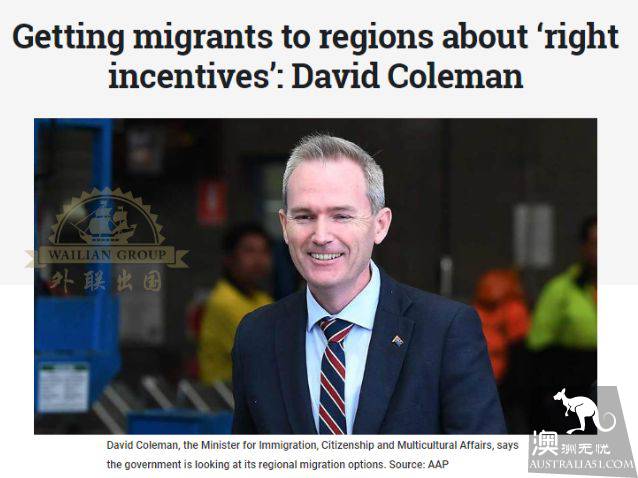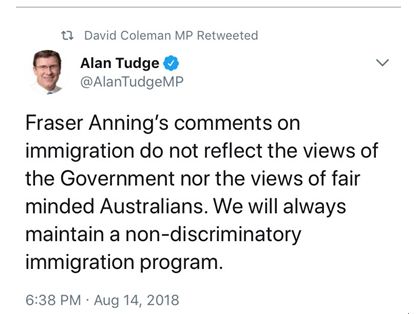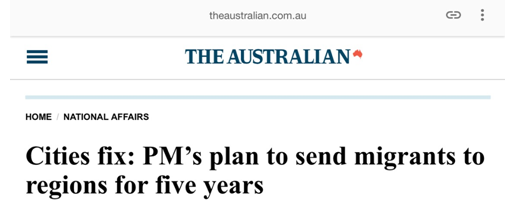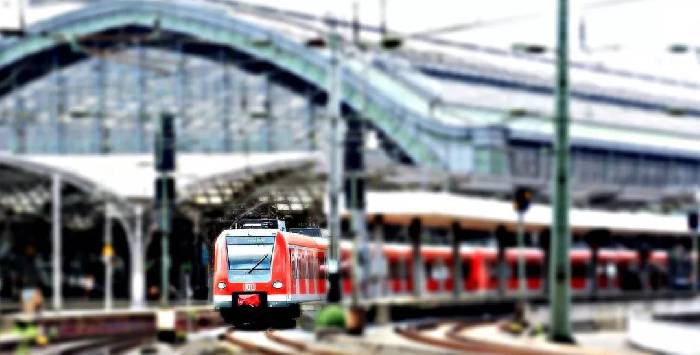As early as last year, according to "Australians", former Australian Prime Minister Tony Abbot had threatened to reduce 80 000 immigrants a year, and current Prime Minister Morrison was then a fiscal minister. He immediately objected to his proposal to "reduce immigration quotas." It also warned that the move could cost government A $5 billion over the next four years and that the decline in immigration could hurt the Australian economy.

Australia`s current Prime Minister Morrison opposes immigration policy tightening
In his most recent statement, Prime Minister Morrison cited a report on the economic contribution of immigrants issued by the Home and Finance Ministries, highlighting the huge economic impact of immigration on Australia.

Morrison believes immigration has brought huge economic benefits.
Unlike parties such as Peter Dutton, which proposed reducing immigration, Mr Morrison`s focus was not limited to big cities such as Melbourne and Sydney, but suggested that the problem of immigration could be addressed in different ways. Mr Morrison is likely to pursue policies in remote areas or increase government investment in infrastructure, he predicted before he went abroad.

And that`s the truth! Immediately after taking office, Morrison separated the power of immigration from the Ministry of the Interior and created a new ministry of immigration, citizen and multiculturalism. The minister was run by the former assistant financial minister David Coleman, in other words Morrison held the power of immigration tightly in his own hands.
The minister, who is in charge of immigration power, reposted a Twitter: in the first time since he came to power. This Twitter was released by minister Alan Tudge, the former city, population and infrastructure ministry of the former citizen minister,.

"the anti-immigration rhetoric does not represent the decision of the Australian government, let alone the position of the general public. We have always adhered to the policy of equality in immigration and treated all immigrants fairly."

Now, official news has come to light on Australia`s long-known new immigration policy. In mid-October, Morrison government announced a plan to reform Australia`s visa system, one of which would force new immigrants to move to Sydney. Melbourne and southeast Queensland had to live outside the big cities for several years.
Later in the day, the newly appointed Department of population and Urban Affairs, minister Alan Tudge, delivered a speech on the plan in Melbourne.
The new deal will require new immigrants to live in remote areas for up to five years through a combination of incentives and constraints. Based on the urgent need to address population imbalances across Australia, and the need to help smaller states and remote areas economically, Morrison government is tough and non-negotiable about the "rural policy".

Which categories of immigrants are most affected by the "go-to-the-countryside" policy?
Australian immigration experts abroad believe that the biggest impact is on skilled immigrants and employer guarantee immigrant applicants, who have relatively limited influence in the family category, but additional requirements may also become stricter, leading to an extended trial cycle. As for business migrants, whether in the centre of the city or in remote areas, will there be conditionalities? Judging by the strength of the policy, it is possible!
Where does it belong to "remote areas"?
In fact, remote areas are not "Regional Australia / Low Population Growth Metropolitan Areas", which means "remote areas" or "urban areas with low population growth" in Australia. As a result, a decline in the birth rate for two consecutive years in an area is defined as a "remote area", not geographically remote.
State by state:
In New South Wales, with the exception of Sydney, Newcastle, the Central Coast and Wolong Gang, the rest are remote areas; in Queensland, the remote areas do not include Grand Brisbane and Gold Coast; Melbourne`s metropolitan area is an exception in Victoria; Perth and its environs are remote.
In particular, the Capital Territory is not remote, while South Australia, Tasmania and the Northern Territory are remote areas.

Perth Church, Australia
"remote areas" also have "livable big cities".
And in "remote areas" there are also parts of the capital cities of Australia, a considerable part of which, in terms of education, employment, life, and so on, are not much worse than the big hot cities such as Sydney and Melbourne, such as Darwin in the Northern Territory. Adelaide in South Australia and Hobart in Tasmania.

Adelaide beach sunset
Among them, the most worthy mention is Adelaide, as the capital of South Australia, Australia`s fifth largest city, with its good security environment, sound infrastructure, advanced medical standards, leading cultural and educational conditions, For many years in a row, the list of the most livable cities in the world is among the top 10.
Foreign countries also recommend Hobart Darwin. The state government has introduced a series of preferential policies and new immigration subsidies to welcome talent. It is not only the capital city, but also the largest port city in Australia. The University of Tasmania in the city ranks among Australia`s top four schools, making it another popular choice for immigrants to Australia.
High-speed railway construction advanced to facilitate the life of new immigrants
In addition to these advantages, in order to stimulate population growth in remote areas, promote economic development in remote areas, and ease the pressure of development in large cities, Alan Tudge gives the answer to a seemingly "impossible task". That is, the long-term construction of Australia`s high-speed rail.

"the high-speed rail line will be announced early next year," Tudge said. Australia`s government has revived its high-speed rail project, once it is aimed at stimulating population growth in remote areas and easing pressure on big cities, once it has the same aim as the new immigration policy. The construction of high-speed rail will accelerate the development of "remote areas" and facilitate the life and work of new immigrants.
Make a decision!
Today`s "remote areas" may become "forbidden areas" next year.
It is worth noting that since what was previously described as "remote areas" are also divided according to population growth rates, the scope is not fixed, in other words, the "remote areas" that are now habitable may become "forbidden areas" for immigrants next year. For example, Perth, Australia`s fourth-largest city, was originally in the category of remote areas because of the influx of skilled migrants, which were grouped into the array of major cities in 2017 and classified as "forbidden areas" for new immigrants.

